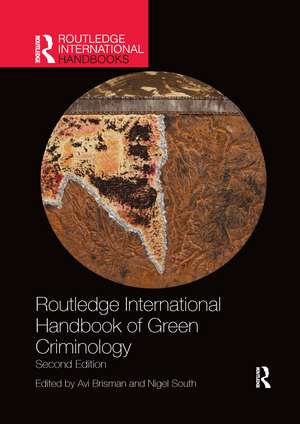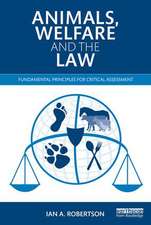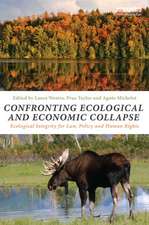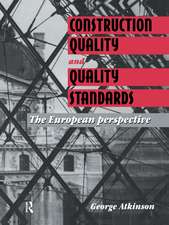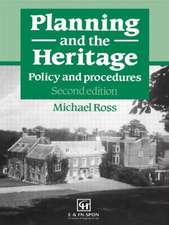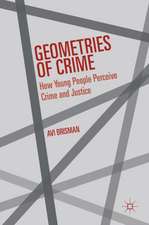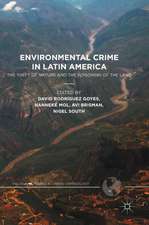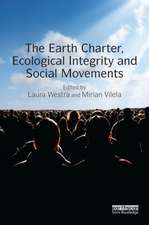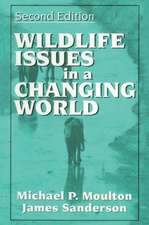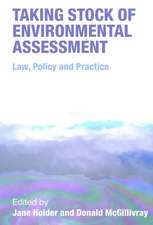Routledge International Handbook of Green Criminology: Routledge International Handbooks
Autor Nigel South, Avi Brismanen Limba Engleză Paperback – 13 iun 2022
The Routledge International Handbook of Green Criminology was the first comprehensive and international anthology dedicated to green criminology. It presented green criminology to an international audience, described the state of the field, offered a description of a range of environmental issues of regional and global importance, and argued for continued criminological attention to environmental crimes and harms, setting an agenda for further study. In the six years since its publication, the field has continued to grow and thrive.
This revised and expanded second edition of the Handbook reflects new methodological orientations, new locations of study such as Asia, Canada and South America, and new responses to environmental harms. While a number of the original chapters have been revised, the second edition offers a range of fresh chapters covering new and emerging areas of study, such as: conservation criminology,eco-feminism,environmental victimology,fracking,migration and eco-rights, ande-waste. This handbook continues to define and capture the field of green criminology and is essential reading for students and researchers engaged in green crime and environmental harm.
| Toate formatele și edițiile | Preț | Express |
|---|---|---|
| Paperback (2) | 314.23 lei 6-8 săpt. | |
| TAYLOR & FRANCIS BOOKS LTD – 13 iun 2022 | 314.23 lei 6-8 săpt. | |
| Taylor & Francis – 12 sep 2014 | 512.02 lei 6-8 săpt. | |
| Hardback (1) | 1581.25 lei 6-8 săpt. | |
| Taylor & Francis – 27 apr 2020 | 1581.25 lei 6-8 săpt. |
Din seria Routledge International Handbooks
-
 Preț: 371.78 lei
Preț: 371.78 lei -
 Preț: 375.50 lei
Preț: 375.50 lei -
 Preț: 362.20 lei
Preț: 362.20 lei -
 Preț: 352.09 lei
Preț: 352.09 lei - 9%
 Preț: 1487.73 lei
Preț: 1487.73 lei - 5%
 Preț: 317.32 lei
Preț: 317.32 lei -
 Preț: 372.05 lei
Preț: 372.05 lei -
 Preț: 361.20 lei
Preț: 361.20 lei -
 Preț: 390.14 lei
Preț: 390.14 lei -
 Preț: 311.91 lei
Preț: 311.91 lei - 9%
 Preț: 1488.70 lei
Preț: 1488.70 lei -
 Preț: 390.23 lei
Preț: 390.23 lei -
 Preț: 347.75 lei
Preț: 347.75 lei -
 Preț: 347.75 lei
Preț: 347.75 lei - 9%
 Preț: 1490.13 lei
Preț: 1490.13 lei -
 Preț: 356.23 lei
Preț: 356.23 lei -
 Preț: 348.29 lei
Preț: 348.29 lei - 5%
 Preț: 328.13 lei
Preț: 328.13 lei -
 Preț: 394.25 lei
Preț: 394.25 lei - 8%
 Preț: 392.90 lei
Preț: 392.90 lei - 8%
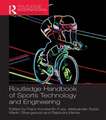 Preț: 422.42 lei
Preț: 422.42 lei -
 Preț: 357.23 lei
Preț: 357.23 lei - 8%
 Preț: 421.97 lei
Preț: 421.97 lei - 5%
 Preț: 452.17 lei
Preț: 452.17 lei - 9%
 Preț: 1665.72 lei
Preț: 1665.72 lei - 9%
 Preț: 1651.64 lei
Preț: 1651.64 lei -
 Preț: 350.21 lei
Preț: 350.21 lei -
 Preț: 381.91 lei
Preț: 381.91 lei -
 Preț: 345.64 lei
Preț: 345.64 lei -
 Preț: 347.75 lei
Preț: 347.75 lei - 20%
 Preț: 1401.04 lei
Preț: 1401.04 lei -
 Preț: 342.77 lei
Preț: 342.77 lei -
 Preț: 346.78 lei
Preț: 346.78 lei -
 Preț: 345.17 lei
Preț: 345.17 lei -
 Preț: 353.89 lei
Preț: 353.89 lei -
 Preț: 1058.63 lei
Preț: 1058.63 lei -
 Preț: 348.06 lei
Preț: 348.06 lei - 5%
 Preț: 337.34 lei
Preț: 337.34 lei -
 Preț: 365.90 lei
Preț: 365.90 lei - 9%
 Preț: 1528.89 lei
Preț: 1528.89 lei -
 Preț: 346.12 lei
Preț: 346.12 lei -
 Preț: 392.49 lei
Preț: 392.49 lei - 9%
 Preț: 1454.53 lei
Preț: 1454.53 lei - 9%
 Preț: 1492.85 lei
Preț: 1492.85 lei - 5%
 Preț: 326.87 lei
Preț: 326.87 lei -
 Preț: 361.75 lei
Preț: 361.75 lei - 9%
 Preț: 1349.84 lei
Preț: 1349.84 lei - 19%
 Preț: 422.81 lei
Preț: 422.81 lei - 8%
 Preț: 385.56 lei
Preț: 385.56 lei
Preț: 314.23 lei
Preț vechi: 348.99 lei
-10% Nou
60.15€ • 65.35$ • 50.56£
Carte tipărită la comandă
Livrare economică 21 aprilie-05 mai
Specificații
ISBN-10: 1032336404
Pagini: 728
Ilustrații: 25 Illustrations, black and white
Dimensiuni: 174 x 246 x 21 mm
Greutate: 1.16 kg
Ediția:2nd edition
Editura: TAYLOR & FRANCIS BOOKS LTD
Colecția Routledge
Seria Routledge International Handbooks
Locul publicării:Oxford, United Kingdom
Public țintă
Postgraduate, Professional, and UndergraduateCuprins
Notă biografică
Nigel South is Professor of Sociology and Director of the Centre for Criminology, University of Essex; Honorary Visiting Professor, School of Law and Social Sciences, University of Suffolk; and a visiting Adjunct Professor at the Crime and Justice Research Centre, Queensland University of Technology. He is a Fellow of the UK Academy of Social Sciences.
Recenzii
Meredith Gore, Michigan State University, USA
"This is an excellent follow-up to the first edition of the Handbook and one that again brings together leading scholars in the field of green criminology. This expanded second edition of the Handbook illustrates the rapid growth and importance of the subdiscipline. It provides a broad tour de horizon that does justice to the richness of green criminological thinking and research. The book will help to inspire students and scholars around the world to delve deeper into specific subjects and thereby contribute to understanding and reducing the problems of environmental crimes and harm."
Toine Spapens, Tilburg University, Netherlands
"This book provides valuable insights and theoretical discussions into the world of environmental crime. Recommended for scholars, students, researchers and anyone interested in understanding crimes against nature and wildlife, this handbook will certainly inspire future work in green criminology."
Rebecca Wong, City University of Hong Kong
"The second edition of the Routledge International Handbook of Green Criminology is a state-of-the-art venture that at once manages to reflect this explosion of concern with green harms worldwide and to suggest new ways of thinking about them… this encyclopaedic volume explores a great variety of threats to planet Earth and its numerous ecosystems in water, on land, and in the air. This is an absolute must read for all scholars and students in this booming green field."
Piers Beirne, University of Southern Maine, Choice
